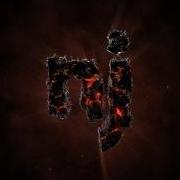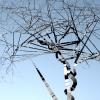Search the Community
Showing results for tags 'Digital Assets'.
-
I updated to h17.5 and all my custom HDAs broke, sidefx updated the bound sop and now im getting this error message on all my HDAs - /obj/path/to/my/HDA/bound1: "Too many elements found for parameter "blahblah/bound1 Bounding Type" This is across about 20 different HDAs in this scene, with probably 100 total instances throughout the scene. Is there any way to go about fixing this sort of issue without manually updating every single HDA by hand? However this is just one case, looking for general solutions and good practices for handling & updating nested HDAs so things dont break like this Example case- you have a tree HDA, inside that you have various leaf modules that are each their own HDA. Each leaf's parameters are relative reference linked to the top level tree HDA. Each leaf is a different HDA (leaf_A, leaf_B etc) however they all share a common HDA that controls the leaf shader, for instance. Now the problem comes when you try and update that leaf shader HDA, if you version up your asset & make changes, the other leaf assets will not update to the latest version so you have to go and update them all by hand. But the bigger problem is if you do something like change the name of a parameter (that is expression linked to the top level HDA) e.g. from leafcolor to leafColor, everything will break and you will get this error message: I'm not 100% sure what these options really mean, but from what I can tell the old leafcolor parameter will be a spare parameter now, unique to that HDA instance, and you can go and delete all spare parameters and that will get rid of them, and I think thats what "destroy all spare parameters" is suppose to do for each instance, HOWEVER since all the other instances of this HDA are nested inside LOCKED HDAs, that button will have no effect and everything will remain broken. Other than undoing these changes, the only way ive been able to fix this is to go and manually delete all the spare parameters in EACH HDA INSTANCE, not just the master HDA. sigh. That is just one example of a parameter change but it can happen in a million different ways. Anyone have any insight on how to handle/avoid situations like this, best practices etc? Any help is much appreciated
-
Hi Everyone, We're having a major problem at work. A couple of our artists have OBJ-level digital assets that they've created, with lots of custom parameters. These digital assets are installed in their current hip files. When we use the Operator Type Manager to copy or duplicate the asset to another directory/version up, the new asset loses all its custom parameters, even after using Save Node Type and Match Current Definition. We've tried everything we can think of, but once we try to copy or duplicate the asset, all the parameters get deleted. Has anyone else run into this? And what's the solution? Thanks, ~Chris
- 4 replies
-
- hda
- digital assets
-
(and 2 more)
Tagged with:
-
Just wanted to let you all know that Pluralsight has a new course on building digital assets. Below is a course description: Introduction to Houdini Digital Assets Creating and using digital assets is a key skill you'll want to have in your repertoire if you want to produce high-quality work. This course, Introduction to Houdini Digital Assets, will teach you how to create professional, usable assets for any production pipeline. First, you'll focus on working smart, not hard, and set up the best workflows and practices in order to be as efficient as possible. Next, you'll create, update, and refine the assets UI. Finally, you'll actually create your assets, and set them up for rendering. By the end of this course, you'll have the knowledge required to create high-quality, professional-looking digital assets. The course can be found here: https://www.pluralsight.com/courses/introduction-houdini-digital-assets-2499
-
- pluralsight
- procedural modeling
-
(and 2 more)
Tagged with:
-
I have been writing some code for a digital asset for the last week or so, and I am just about done with it. The the biggest problem I am looking at now is that the final step needs SciPy to finish efficiently and it is already using Numpy. I know that if I uses these libraries, I will have to have them installed on any system that I run the node on, which is not good for distribution. Is there any convention to deal with this already in place? I know that I should be able to compile the code and it should be able to run independently of any software or libraries installed on a system, but I have never done this for Python code in general, let alone for Houdini in particular.
-
Hey folks, I was wondering if it is possible to include e.g obj's or alembics directly into a digital asset? The model will never change, so I thought there may be a way to implement it directly, without having to load it manually each time you want to use the asset. Furthermore, the user didn't have to own the file, it will just come along with the asset. Is that possible? Thank you in advance!
-
Hello everyone, I recently launched my new training series titled "Shader Building in Houdini" This training is a continuation of the Texture Building Series. In this series we take a look at how to convert simple and complex shader trees into usable Digital Assets. The purpose of the training is to help simplify the material building process in Houdini. We will take the PBR shader nodes and convert those into usable Digital Assets that we can then use in production. We also make digital assets to help make the day to day workflow of shader building simpler. Trailer For more information you can click on the link given below. http://www.rohandalvi.net/shader regards Rohan Dalvi
- 2 replies
-
- 6
-

-
- Mantra
- digital assets
-
(and 2 more)
Tagged with:
-
Hi guys, i might be asking a complete noob question here (i'm a beginner with Houdini...) so i'm sry if this is totally rtfm. I'm the pipeline TD of a project (this one ) and we are running a Houdini/Maya pipeline. Our pipeline is asset based which means that artists are doing chunks of work with well defined in/output (a shading hda for example, or a maya rig) and then publish this work either into an HDA or just copying a maya file to where all references are pointing to. (Publishing in fancy TD speech) These assets are then used by other artists (for example an animator might reference a rig to do his animation, or a lighting artists brings in the shading HDA from the Shading OTL and apply it to a prop in the shot). So it's important that the artists coming later on are able to change stuff specific to a shot on the base asset. They need to make local edits, while still remaining the *live connection* to the global changes that are made on the base assets, which are ment to ripple through the whole production. How is that happening in Maya: Maya stores local changes to references as MEL script automatically. The *live connection* to the reference always remains, and local changes are layered on top. This way you always have the latest & greatest global version + your local edits. (As long as you dont break on what the scripts rely on....names) What is the way to achieve that in Houdini? As far as i understand, when you want to make local edits to an asset, you say "Allow editing of contents". What that does is, it breaks the connection to your global asset and uses a scene embedded definition instead, where you are doing your local edits. You can then either choose to publish your local changes globally into the otl again or match the global definition back to your local asset (loosing your local changes). Once again, i might be totally newb here and overcomplicating things, but i'm wondering about the Houdini way to enable people to do local edits on assets while staying live to global changes? (Since we always relied upon exactly that with the assets/references in Maya). PS: Maybe that's all a bit theoretical so let me try to illustrate this with a totaly figured example: Lets say we have a very highpoly prop to populate a shot. It is most of the time entirely in the frame but we have one artists that is rendering a close up shot where only 10% of the prop are visible. In order to save translation time he deletes the 90% of polies that are invisible. (We now has a blast node between the UVGenerate and the OUT node). To be able to do that he clicked "Allow editing of contents", embedding the HDA into the scene. Later on the guy in charge of the base asset changes something on the UVs. He puts a UVPreGenerateFix node in front of the UVGenerate node in the HDA and publishes it. Everybody gets the new assets now, just not the guy who clicked "Allow editing of contents" and modified the HDA. In Maya the global and local changes would have been preserved since after referencing, the MEL scripts would have serached for a node called "UVGenerate" and a node called "OUT" and connected the local blast node inbetween.
- 5 replies
-
- local edits
- References
-
(and 3 more)
Tagged with:
-
Hey guys, I'm new to using digital assets and would like to create one with an embedded image file to use in the shader but have not been able to figure out how to do so. I have seen people mention using opdef, and the documentation suggested it, but I am not clear on exactly how the syntax works. If someone could please give me a pointer to somewhere with a detailed description of how to reference embedded textures, that would be great. Particularly, when the documentation discusses the section, what does that mean? In case it matters I am trying to embed a .png file. Thanks






